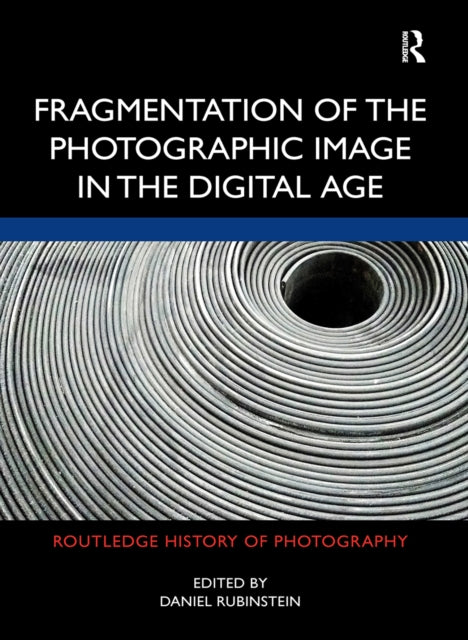Shulph Ink
Fragmentation of the Photographic Image in the Digital Age
Fragmentation of the Photographic Image in the Digital Age
YOU SAVE £2.07
- Condition: Brand new
- UK Delivery times: Usually arrives within 2 - 3 working days
- UK Shipping: Fee starts at £2.39. Subject to product weight & dimension
Bulk ordering. Want 15 or more copies? Get a personalised quote and bigger discounts. Learn more about bulk orders.
Couldn't load pickup availability
- More about Fragmentation of the Photographic Image in the Digital Age
The fragmentation of the photographic image in the digital age challenges traditional notions of photography and explores its role in dynamic developments in augmented intelligence, neuroscience, critical theory, and cybernetic cultures. It presents photography as a critical discipline and a new art form that intersects visual art, contemporary philosophy, and digital technologies.
Format: Paperback / softback
Length: 254 pages
Publication date: 13 December 2021
Publisher: Taylor & Francis Ltd
The fragmentation of the photographic image in the digital age presents a profound challenge to the established principles of photographic theory and practice. It goes beyond the mere comprehension of the image as a static portrayal of reality and reveals photography as a vital catalyst for dynamic advancements in augmented intelligence, neuroscience, critical theory, and cybernetic cultures. This transformative perspective is explored through a collection of essays authored by renowned philosophers, political theorists, software artists, media researchers, curators, and experimental programmers. Through their insightful contributions, photography emerges as a multifaceted entity, simultaneously functioning as a new critical discipline and a groundbreaking art form that straddles the boundaries of visual art, contemporary philosophy, and digital technologies.
In this era of rapid technological advancements, the photographic image undergoes a profound transformation as it enters the digital realm. The traditional notion of the image as a fixed and unchanging representation of reality is challenged by the fragmented nature of digital images. These images are composed of numerous pixels, each representing a tiny fraction of the overall picture, resulting in a loss of detail and clarity. Moreover, the digital processing and manipulation of images introduce further complexities, allowing for endless editing and manipulation possibilities that blur the lines between reality and fabrication.
The fragmentation of the photographic image in the digital age has far-reaching implications for the field of photography. It challenges the traditional notion of the camera as a tool for capturing and preserving reality, suggesting that photography is more akin to a creative process than a mere recording device. Photographers now have the ability to manipulate and transform images in ways that were previously unimaginable, creating new visual languages and aesthetics. This has led to the emergence of new genres of photography, such as digital art, which combines traditional photographic techniques with digital manipulation to create stunning and abstract works.
Furthermore, the fragmented nature of digital images has implications for the way we perceive and interpret photographs. The abundance of information and the ability to zoom in and out on images create a sense of familiarity and proximity that can distort our understanding of the subject matter. This is particularly relevant in the context of photojournalism, where the ability to manipulate images can be used to manipulate public opinion and shape narratives.
Despite these challenges, the fragmentation of the photographic image in the digital age also presents new opportunities for creativity and expression. Photographers can use the fragmented nature of digital images to create new visual metaphors and narratives that challenge our preconceived notions of reality. They can also explore the boundaries between photography and other art forms, such as video, animation, and performance, to create interdisciplinary works that blur the lines between different media.
In conclusion, the fragmentation of the photographic image in the digital age presents a complex and multifaceted challenge to the established principles of photographic theory and practice. It goes beyond the mere comprehension of the image as a static representation of reality and reveals photography as a vital catalyst for dynamic advancements in augmented intelligence, neuroscience, critical theory, and cybernetic cultures. Through the exploration of essays by leading philosophers, political theorists, software artists, media researchers, curators, and experimental programmers, photography emerges as a new critical discipline and a groundbreaking art form that stands at the crossroads of visual art, contemporary philosophy, and digital technologies. As we navigate this new landscape, it is essential to consider the ethical implications of our photographic practices and to strive for a balance between creativity and authenticity in our work.
Weight: 498g
Dimension: 174 x 242 x 18 (mm)
ISBN-13: 9781032240169
This item can be found in:
UK and International shipping information
UK and International shipping information
UK Delivery and returns information:
- Delivery within 2 - 3 days when ordering in the UK.
- Shipping fee for UK customers from £2.39. Fully tracked shipping service available.
- Returns policy: Return within 30 days of receipt for full refund.
International deliveries:
Shulph Ink now ships to Australia, Belgium, Canada, France, Germany, Ireland, Italy, India, Luxembourg Saudi Arabia, Singapore, Spain, Netherlands, New Zealand, United Arab Emirates, United States of America.
- Delivery times: within 5 - 10 days for international orders.
- Shipping fee: charges vary for overseas orders. Only tracked services are available for most international orders. Some countries have untracked shipping options.
- Customs charges: If ordering to addresses outside the United Kingdom, you may or may not incur additional customs and duties fees during local delivery.


